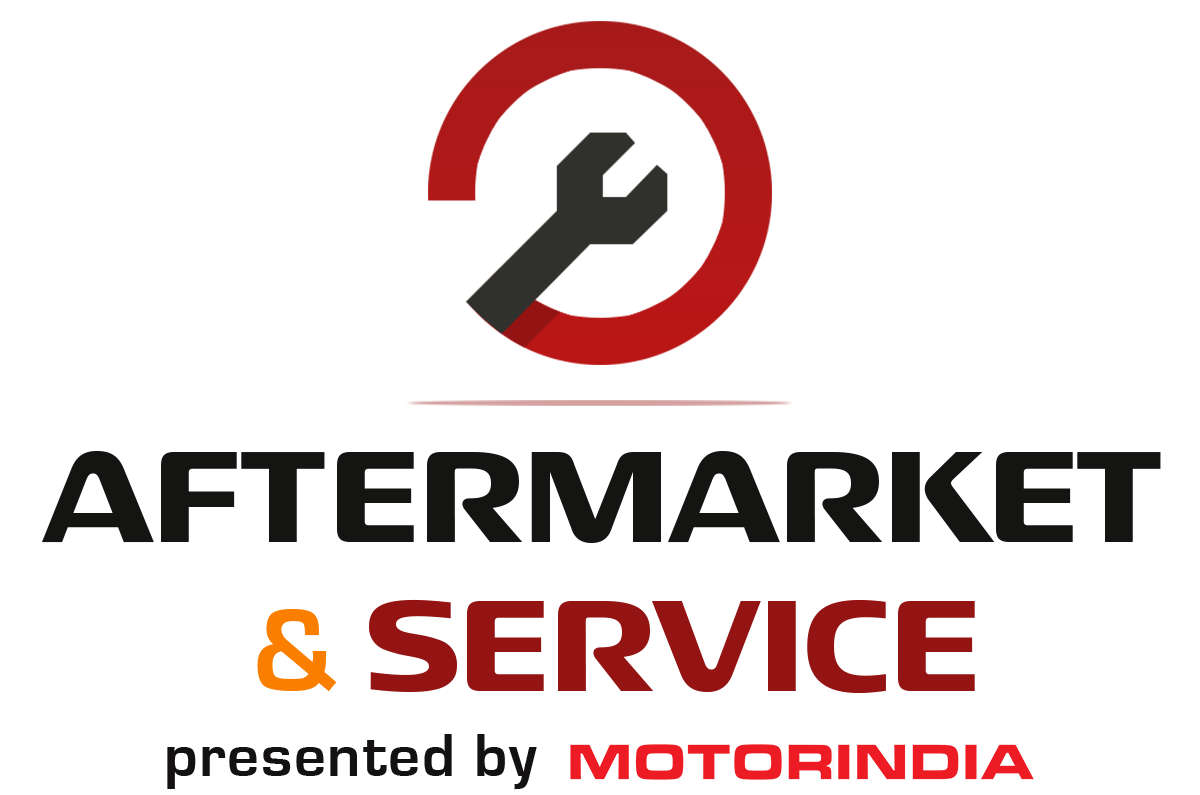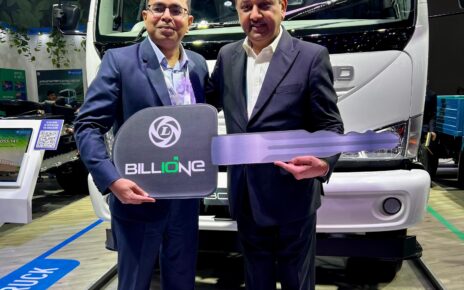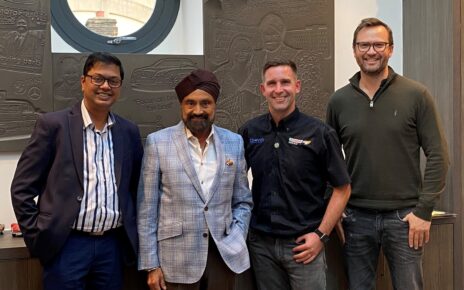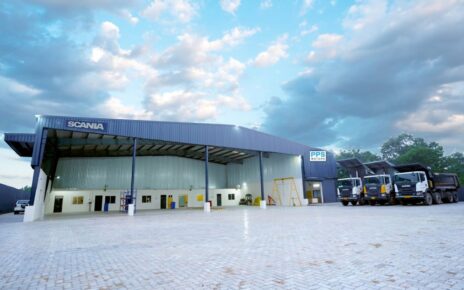
In a sector traditionally driven by tonnes and timelines, Magenta Mobility is adding a crucial third dimension to the logistics equation: technology built on trust. With a vision to decarbonize and digitize the movement of goods, the company is going beyond simply deploying EVs; it is architecting an ecosystem that makes electrification efficient, reliable, and future-ready.
At the heart of this measured yet impactful shift is Maxson Lewis, Managing Director and CEO of Magenta Mobility; whose mix of strategic clarity and technical depth is helping redefine how EV logistics operates in India. In a one-on-one conversation, Rajesh Rajgor delves into Maxson’s distinctive thought process; touching on vehicle selection, operational playbooks, fleet management, and how Magenta’s business model is evolving in sync with the changing demands of Indian logistics.
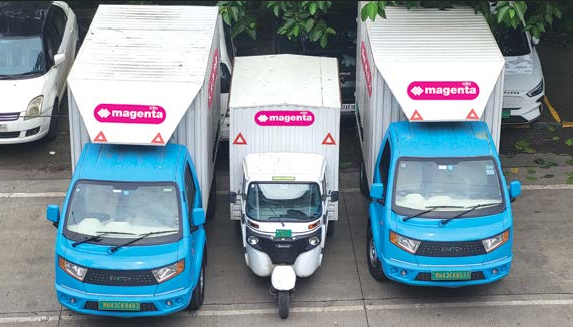
Magenta isn’t riding the EV wave; it’s helping define it. From launching India’s first solar-powered EV charging station to operating one of the largest electric delivery fleets, the company has stayed focused on one core question: “Is your EV fleet truly optimized, or is it just electric?”
“Everyone wants green logistics, but procurement teams ask, ‘How green is it for my balance sheet?’” Maxson points out. “We had to address sustainability and economics together. Electrification isn’t just vehicle deployment; it’s about operationalizing them intelligently.”
Platform First, Fleet Second
Magenta’s most transformative move is its proprietary fleet intelligence platform, Norminc, built entirely in, house to go beyond standard OEM telematics. “Traditional systems focus on vehicle mechanics. We needed insights into driver behaviour, package location, uptime, and real-time performance,” Maxson says.
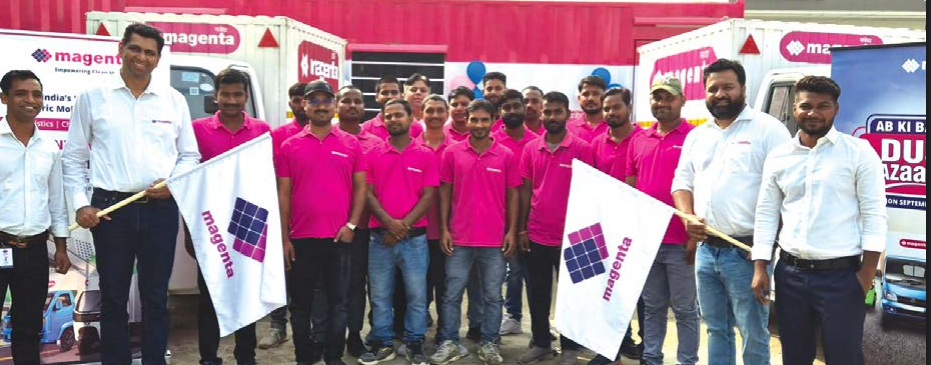
Norminc offers predictive insights, live tracking, and dynamic route optimization. Unlike platforms that retrofit data, Norminc is built from the ground up to respond to operational needs. This control over the software stack allows Magenta to deliver a real-time operational snapshot across cities; tracking traffic patterns, driver performance, and fleet uptime to optimize every route and delivery.
City-Cluster Strategy and EV Penetration
Magenta operates in major urban hubs including Bengaluru, Hyderabad, Mumbai, Delhi NCR, and Pune. “Each city served a different strategic purpose; Bengaluru was our testbed, Mumbai gave us capital access, and Delhi NCR has shown rapid EV adoption,” Maxson explains.

In Delhi NCR alone, Magenta deployed 700 vehicles in 18 months. The company is also focusing on regional clusters like Gujarat and Greater Delhi, where driver economics and EV awareness are more favourable.
Building Tech-Enabled Trust with Drivers
Beyond platforms and data, Magenta’s success is deeply rooted in its relationship with drivers. “In legacy logistics, drivers often distrust tech; they think it’s only for monitoring,” says Maxson. Changing that perception has been key.
Magenta invests in onboarding, training, and empowering drivers through its EVET (Electric Vehicle Enablement Technology) framework. This system covers vehicle telemetry, route mapping, maintenance, and charging; all managed in-house. A Crew Management Program, inspired by the airline industry, ensures safety briefings and structured handovers for each shift. “Drivers are treated like pilots, and vehicles like aircraft,” Maxson adds.
Drivers have responded positively. “Many are now uncomfortable going back to ICE vehicles. EVs offer smoother rides, lower fatigue, and a quieter cabin; all of which improve productivity,” he notes.
Magenta also supports drivers through health programs and a democratically managed welfare fund. “Magenta contributes ₹50 per month for each driver, which is pooled into the Driver Welfare Fund. They can use this for education, healthcare, or emergencies. With consistent earnings and no salary delays, many drivers have become eligible for formal loans; gaining financial dignity in the process,” Maxson shares.
Market-Ready, Not Market-Dependent
Magenta’s ecosystem is self-funded and designed for long-term returns. “We’re not expecting clients to pay for our vision. We’ve already invested and now we’re showing them the TCO (Total Cost of Ownership) advantage,” he shares.
Clients appreciate the transparency and reliability. Some have begun paying a premium for Magenta’s efficiency. “They want visibility; not just where the parcel is, but how the vehicle is performing. We offer that level of detail,” he adds.
From four cities to 18 in under two years, Magenta’s expansion is paced but purposeful. “We don’t just aim for presence; we build density,” Maxson says. In states like Uttar Pradesh, they start in Noida before scaling to Lucknow and Kanpur, building a connected network rather than scattered outposts.
As a result, the company has already deployed over 2,000 electric vehicles across its key markets and aims to scale up to 5,000 by FY25. The emphasis remains on building meaningful presence with operational depth rather than just expanding a footprint for visibility.
SFO Program: Enabling the EV Leap for Small Operators
Magenta’s new initiative, the SFO (Small Fleet Operator) program, is tailored for ICE vehicle owners who want to transition to EVs but lack the capital or know-how. “We bring together the OEM, charging infra, financing, and training into one platform,” Maxson says. The goal is to let small operators plug into a larger ecosystem and scale up confidently.
The pilot has already been running quietly for six months and is set for formal launch soon. Through this model, Magenta is shifting from being a standalone player to an industry enabler.
While many EV startups continue to burn capital, Magenta is nearing a significant milestone. “We’ve already achieved unit economic positivity and expect to hit EBITDA profitability shortly,” Maxson confirms. Years of groundwork have now positioned the company for a strong value-unlock phase.
This integration of hardware, software, people, and processes is what makes Magenta’s model robust; not just efficient.
A Broader Vision: Influencing 10% of India’s Commercial Vehicle Sales
India currently sells about 5 lakh new commercial vehicles (NVCs) annually, but EVs represent a small fraction. Maxson wants to help change that. “We don’t just want 20,000 EVs on the road; we want to influence 10% of India’s NVC sales to go electric,” he says.
That change will come not just through Magenta’s direct operations but through the ecosystem it enables; clients, OEMs, competitors, and platforms like the EVFOA (Electric Vehicle Fleet Operators Association), a knowledge-sharing network of vetted operators.
As Maxson sums it up, “We’re not here to disrupt. We’re here to demonstrate what’s possible when you build thoughtfully, from the ground up.”
